Vultr is a well-known cloud computing provider with 32 data centers worldwide, making it a decent alternative to DigitalOcean. Over the years, I have used various cloud hosts, and Vultr delivers decent TTFB, especially on high-frequency servers powered by EPYC and Intel Xeon. (Scores pretty well on benchmarks).
They offer a range of cloud computing solutions, from basic VPSs to modern GPU-powered ones. Vultr, DO, UpCloud, Kamatera, and Katapult are all decent providers of virtual servers as they are all competitively priced.
I enjoy testing out virtual and dedicated servers with various providers, and I’m kind of addicted to them. It is a cost-effective way to host your website and is flexible when you need to make changes.
You should obtain a server from a company that does not provide shared hosting. I prefer smaller and medium-sized providers. So, let’s dive into Vultr cloud hosting…
Products and Pricing

Vultr is more than just a web host, as it offers a range of cloud computing services, including storage, load balancers, GPUs, VPNs, and more.
They are cheaper than AWS and Google Cloud (at the same price as DO/Linode). Let’s see what kind of cloud services and pricing they offer.
Regular Performance
First, regular performance servers are a good choice for static websites that require average speed. It uses Intel CPUs from older generations and regular SSDs. To be clear, these servers are cost-effective than high-frequency servers, but I’d prefer high-performance servers, such as HF or AMD EPYC, for active websites. Price list:
| CPU | RAM | Bandwidth | Storage | Monthly fee |
|---|---|---|---|---|
| 1 | 1 GB | 1 TB | 25 GB | $5 |
| 1 | 2 GB | 2 TB | 55 GB | $10 |
| 2 | 2 GB | 3 TB | 65 GB | $15 |
| 2 | 4 GB | 3 TB | 80 GB | $20 |
| 4 | 8 GB | 4 TB | 160 GB | $40 |
SSD hosting is viable, but I recommend it only for average sites, as my speed test results were lower than expected. They have servers with 24 CPUs and 96GB RAM.
I don’t see the point in using SSD hosting, since high-frequency/high-performance servers are slightly more expensive. However, the performance is decent.
When it comes to unmanaged cloud VPS, I prefer small companies. VPS hosting offers more features and flexibility, and can be integrated with your favorite control panel. Try out Webdock VPS; they’re cheaper, but they only have one data center.
High Frequency and High-Performance
As I mentioned, they offer two high-performance server options: AMD EPYC and Intel Xeon, both priced the same. You can pick up to 48 GB of RAM.
| CPU | RAM | Bandwidth | Storage | Monthly fee |
|---|---|---|---|---|
| 1 | 1 GB | 1 TB | 32 GB | $6 |
| 1 | 2 GB | 2 TB | 64 GB | $12 |
| 2 | 2 GB | 3 TB | 80 GB | $18 |
| 2 | 4 GB | 3 TB | 128 GB | $24 |
| 3 | 8 GB | 4 TB | 256 GB | $48 |
If you have dynamic sites or substantial traffic, high-frequency can be the right choice, as it enables quick TTFB and fast server performance. They’re NVMe drives, not SSDs. There is also a separate section for high-frequency servers.
Optimized Cloud Compute
Optimized cloud machines run on AMD EPYC CPUs. They deliver fast, consistent performance for a variety of web apps, and they have four types of services:
Storage Optimized: Typical CPU/RAM combo and high NVMe storage. Works well for sites with lots of databases, etc. With 1 CPU, 8 GB RAM, and 150 NVMe, it costs $75.00 per month; however, the NVMe capacity can be increased to 5 TB.
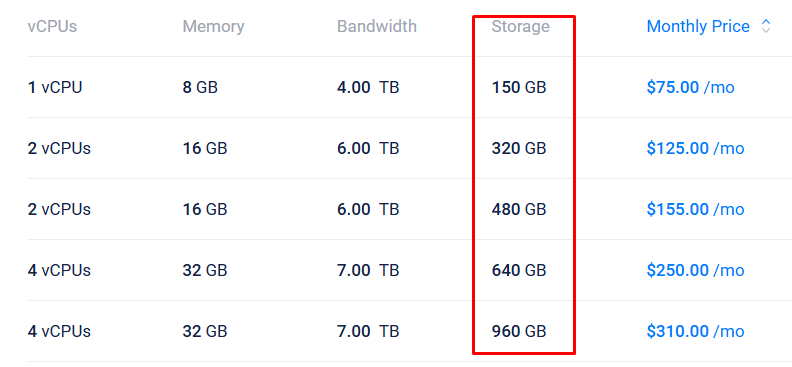
Memory Optimized: These VMs provide a significantly higher amount of RAM than CPUs and NVMe. Starting at $40.00/month with 8 GB RAM.

CPU Optimized: More CPU power in these VMs than RAM and NVMe SSDs. Ideal for video processing, data syncing, ad networks, high traffic websites and mining.
You can get 4 cores for under $100. However, I believe dedicated servers or dedicated CPU virtual machines are ideal for applications that require substantial processor power.
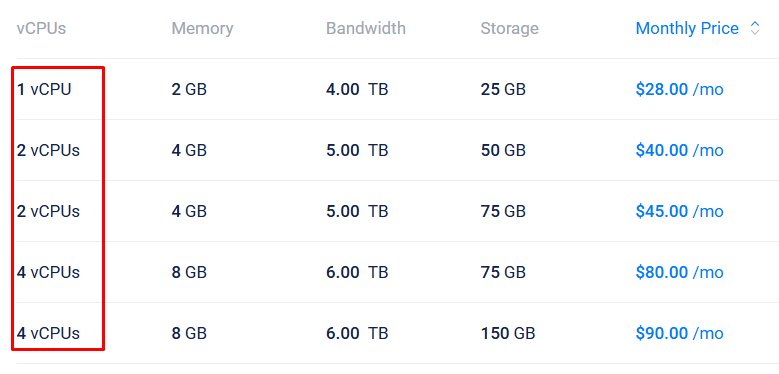
General Purpose: Ideal balance between CPU, RAM, and NVMe. Suitable for online stores, ad networks, games, video streaming, API servers, and web apps with a lot of traffic. At $ 120.00/month, it includes 4 CPUs, 16GB RAM, and 80GB NVMe.
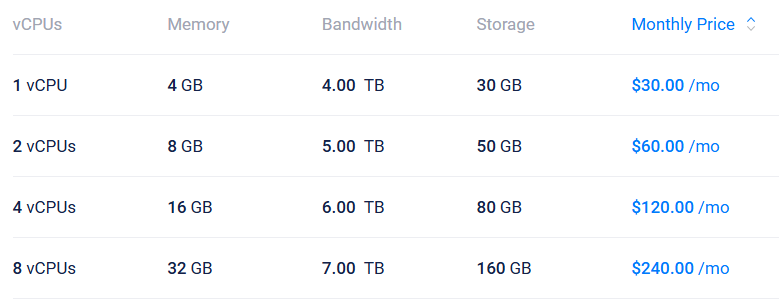
Often, optimized cloud servers are used for specific purposes, allowing you to obtain reliable server resources. They’re expensive, but they work for even average websites, and are ideal for large-scale web projects.
Bare Metal
There are two types of bare metal with Vultr: GPU and CPU. GPUs are popular these days for AI training and inference, and they offer ultra-high-end models like the AMD MI355X. You can also opt for low-end GPUs, such as the NVIDIA A16.
With a bare-metal CPU, you get super-fast performance because the server’s resources are dedicated to a single client. It’s entirely your responsibility to set it up and manage it. But you’ll get dedicated CPU cores and RAM on your server.
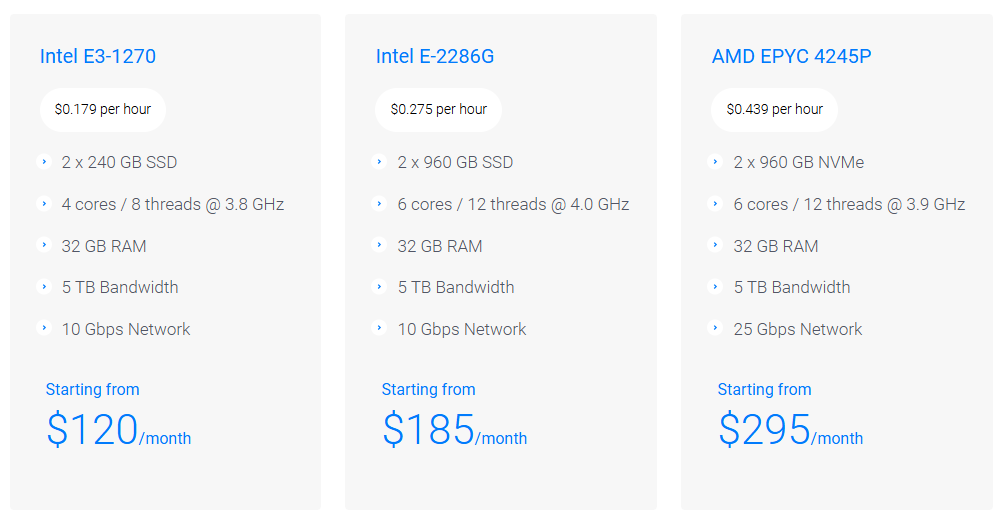
BM is suitable for e-commerce, databases, multimedia applications, ad exchanges, hosts, and other high-scale businesses. Bare metal is ideal for high-traffic websites.
Numerous resellers and shared hosting companies utilize it. Typically, plans start at $120/m with 4 cores, 32GB RAM, and 5TB bandwidth.
Other Products
They offer a lot of hosting and storage options:
- Block storage: Offers 10GB of block storage for $ 1 per month.
- Object Storage: Object storage lets you store videos, songs, and files online. Monthly bandwidth and storage up to 1 TB.
- Load Balancers: Load balancers help minimize errors and downtime by distributing server workload. It’s $10.00 per month.
- CDN: It’s generally not a good idea to use a CDN provided by your host. You can find plenty of well-established CDN providers.
Vultr High Frequency
Well, here’s the most preferred cloud VPS among bloggers and developers: “Vultr High Frequency“. Several tests show that high-frequency servers are faster than regular hosting (scores well on Geekbench). Powered by Intel Xeon CPUs over 3GHz with NVMe drives. However, these CPUs are still operating in a shared environment.

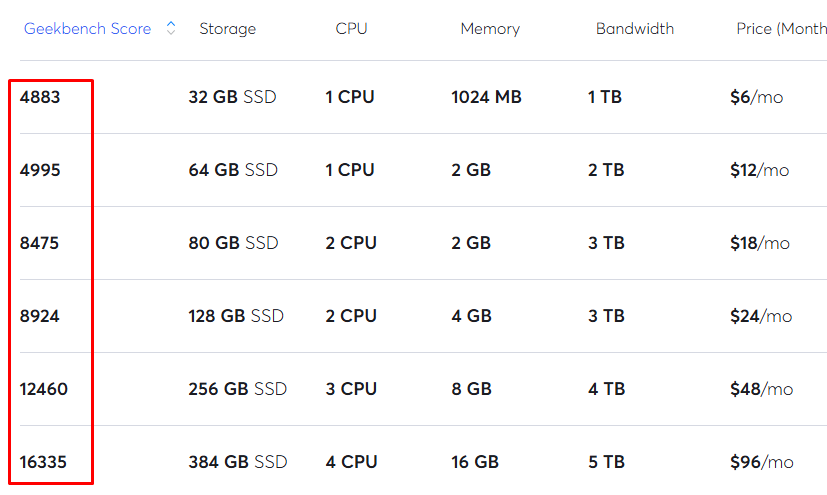
They also have high-performance servers that utilize AMD EPYC. In my experience, they’re just as good as high-frequency. With modern hardware and stacks, it’s easier to optimize TTFB and overall performance.
In many cases, shared web hosts offer limited freedom and control over your setup. Basically, you use the hosting offer that they’ve set up.
It’s challenging to make changes; they combine Apache and Nginx. Or entirely Apache servers on old-generation hardware. Typical static sites, such as blogs, services, and content-based websites, won’t have many issues with it.
But high-frequency servers are ideal for any kind of website, even ones with a bunch of uncacheable content (suitable for documentation).
HF features NVMe and high clock speeds, making it ideal for websites with heavy themes and numerous features.
Cloudways, xCloud, and ServerAvatar are some providers that offer Vultr virtual servers at an added cost. The solution comes pre-configured with tweaks, which makes it slightly expensive. It’s useful if you’re unfamiliar with unmanaged servers.
Vultr Data Centers
They manage over 30 data centers worldwide, so it’s essentially a CDN. Fast and easy deployment of low-latency servers, no matter where you are. The control panel allows you to select a server location when deploying a server.

Vultr’s data centers:
- North America: Chicago, Dallas, Seattle, Los Angeles, Atlanta, Silicon Valley, Toronto, Miami, Mexico City, Honolulu, and New Jersey.
- Latin America: Sao Paulo and Santiago.
- Europe: London, Frankfurt, Paris, Warsaw, Madrid, Stockholm, and Amsterdam.
- Asia: Osaka, Tokyo, Seoul, Singapore, Mumbai, Bangalore, and Delhi.
- Australia: Melbourne and Sydney.
- Africa: Johannesburg
Point is…. Your DNS connection time should be less than 100 ms. You should choose a server location near your users. Ideally, local websites should set their servers as close to their users as possible. If most of your traffic originates from Asia, consider selecting a data center location in Asia, such as Singapore.
And if your traffic is specifically targeted to the USA, Canada, or even South America, select a U.S. data center, such as Silicon Valley.
You can choose Melbourne if your users are primarily located in Australia, New Zealand, and South Asia. Nevertheless, Singapore remains a good choice.
Johannesburg is the only option if you have all African visitors. However, I think it’s still a good idea to keep the website in a steady city like Madrid. And Latinos can choose between Mexico City, Sao Paulo, and Santiago.
Where is the best place to keep websites with worldwide traffic?
I’ve tested multiple locations, including Europe, the US, Singapore, and India, but I haven’t found the right one for everyone. Therefore, check where your site receives the most traffic and utilize a data center nearby.
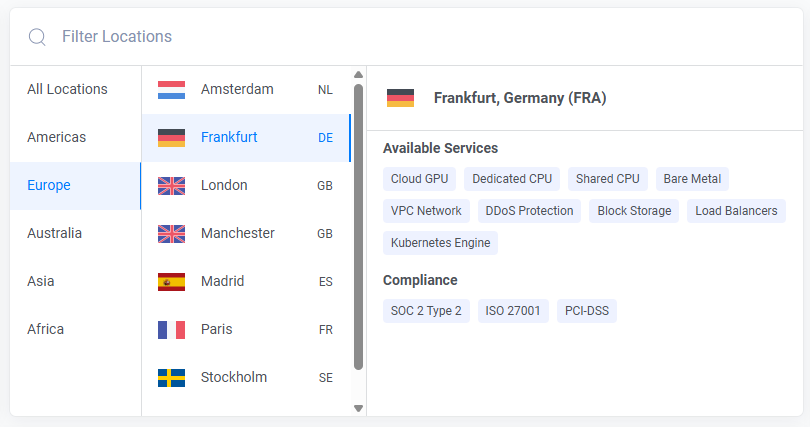
For instance, if my website receives 80% of its traffic from the US and EU, I’d choose a server in New Jersey or Frankfurt to maintain balance.
Now, we have modern hosting with EDGE caching, so your website loads fast everywhere. And use a CDN like FlyingCDN so everyone gets the same experience. But that might not always work, especially for sites with dynamic content.
Keep in mind, always choose a close data center because it’s useful for many reasons. But for average to big websites, you’ll need a good WordPress CDN.
Control Panel

Constant Company‘s Vultr has a user-friendly interface and control panel, and its features are sufficient to manage/configure a cloud server.
The procedure is simple, easy to deploy, and allows you to manage your servers easily. I like their deployment process because it is simple and can be completed with a few mouse clicks. They’re good. Once your server is deployed, you can handle it through the dashboard.
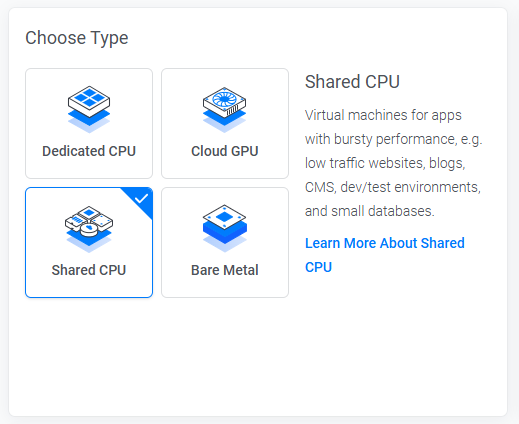
I mean, they do not provide fully managed services like a regular web host. But you can start, stop, reboot, and reinstall servers as required.
You can monitor your server’s resource usage in the server console and manage the IP addresses assigned to your server. The server health tool can alert you when your application is in high demand.
The panel enables users to manage features such as firewalls, networks, and DNS. The team management feature lets you set up limited access for others. It has all the necessary elements to run a server.
But if you are an average user, I recommend using VULTR with cloud hosting control panels such as RunCloud, xCloud, or SPanel.
You don’t need technical or server admin experience to use cloud hosting panels. You can use them quickly, and most features are within reach with just a few clicks. There’s only one problem: using the control panel isn’t free.
Compared to providers, this can cost up to $15 a month. GridPane, for example, can cost more than $100. CloudPanel is free, but you need some technical experience.
xCloud costs less than $ 10/month for a regular user. You can also try Ploi or FlyWP for free. Or try the Vultr control panel; it’s not bad. You can try different settings once you know what to change, which is much closer to how normal UI works.
Marketplace
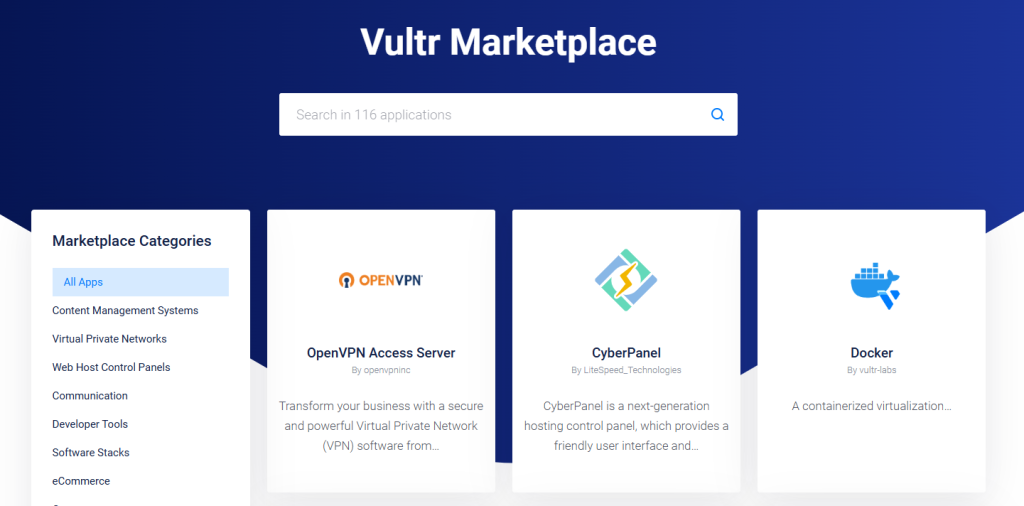
With Vultr, you have access to the extensive marketplace and can deploy apps with one click. There are numerous open-source apps, as well as paid ones.
You can install a variety of operating systems, including Debian, Ubuntu, Rocky Linux, Windows, and others. Alternatively, you can upload an ISO.

If you wish to use LiteSpeed WordPress hosting, there’s an option to set up OpenLiteSpeed + WordPress on Ubuntu. Drupal, Joomla, and Rails are all supported. It’s good to pick Litespeed because you get a free cache plugin.

Yes, you can use free control panels such as CloudPanel and FASTPANEL alongside paid control panels like cPanel, Plesk, and SWPanel. The marketplace features notable apps, including Docker, Bitnami stacks, and Colyseus.
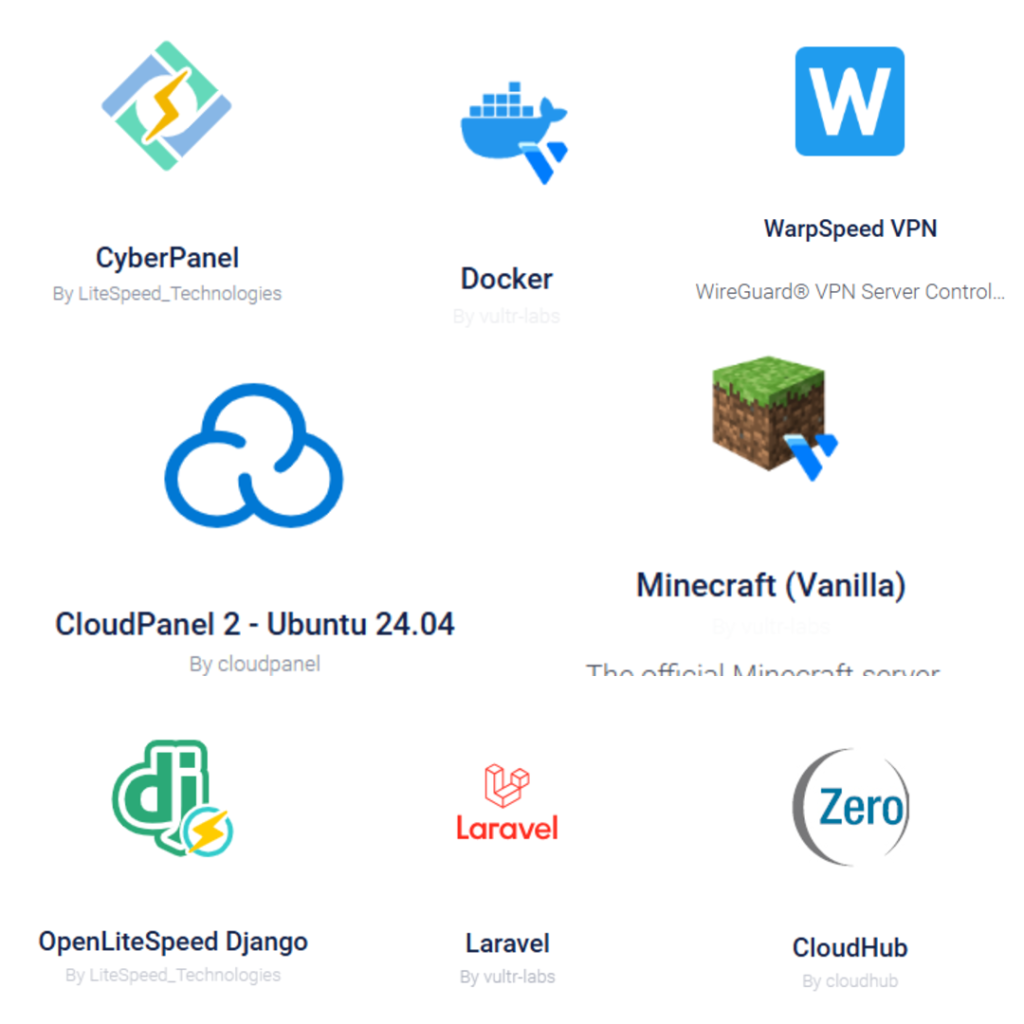
You don’t need a third-party panel if you are familiar with these tools. Remember, the server is your responsibility. They have some clear documentation on how to do these things. For average and new users, you may want to opt for a control panel (connect to the server with an IP address or SSH). Yes, their web console is terrible. Some web hosts provide Vultr cloud hosting instead of the control panel.
Downsides To Vultr Cloud Hosting?
I’ve been using them for years, and nothing’s ever gone wrong. Still, there are some downsides…
- There are numerous complaints about their customer service; however, it’s unmanaged. Most unmanaged cloud computing services do not offer complete customer service, but they have adequate documentation.
- Similar prices to DigitalOcean, but expensive than Hetzner or Starlight.
- Some customers complain about downtime.
- Advanced packages aren’t available at all server locations.
- I am not happy with the web console (built-in SSH terminal). In this case, you will most likely need an external SSH client such as OpenSSH or PuTTY.
Final Thoughts on Vultr Cloud Computing
With Vultr, you can deploy virtually anything, from a small website to a large one or even AI training. They have high-frequency, high-performance servers built with the latest tech. However, I do not have extensive experience with their Cloud GPU or Bare Metal, so I can’t comment on them. They also accept crypto payments.
You can use VULTR without much trouble if you’re comfortable with these things. They have a nice app marketplace, and you can even upload your own ISO.
They operate 32 data centers worldwide. Everything has its pros and cons; Vultr’s panel is nice, but the built-in SSH terminal is somewhat annoying.
There are numerous other cloud computing service providers, including DigitalOcean, UpCloud, Kamatera, Linode, and others.
Yes, big companies like Amazon are reliable, but they can be expensive. Read More: Methods To Copy Text From Protected Website





